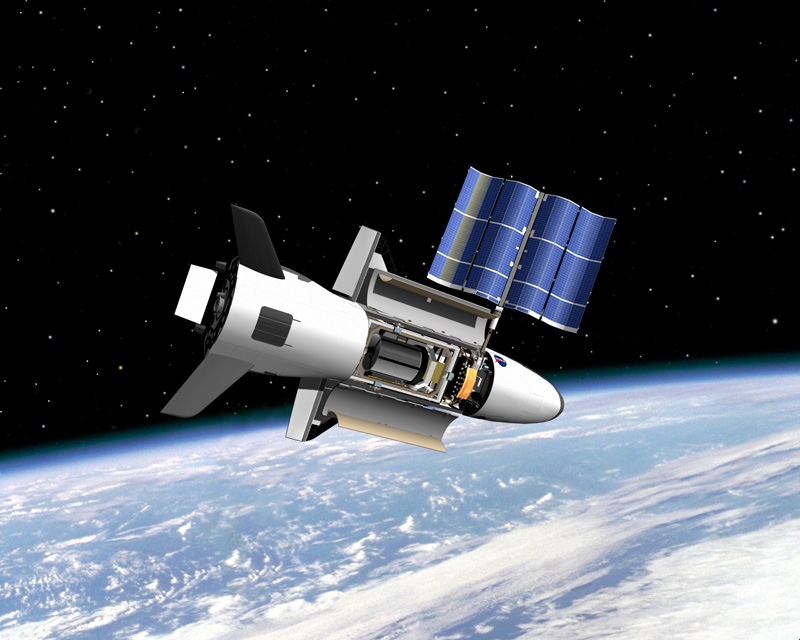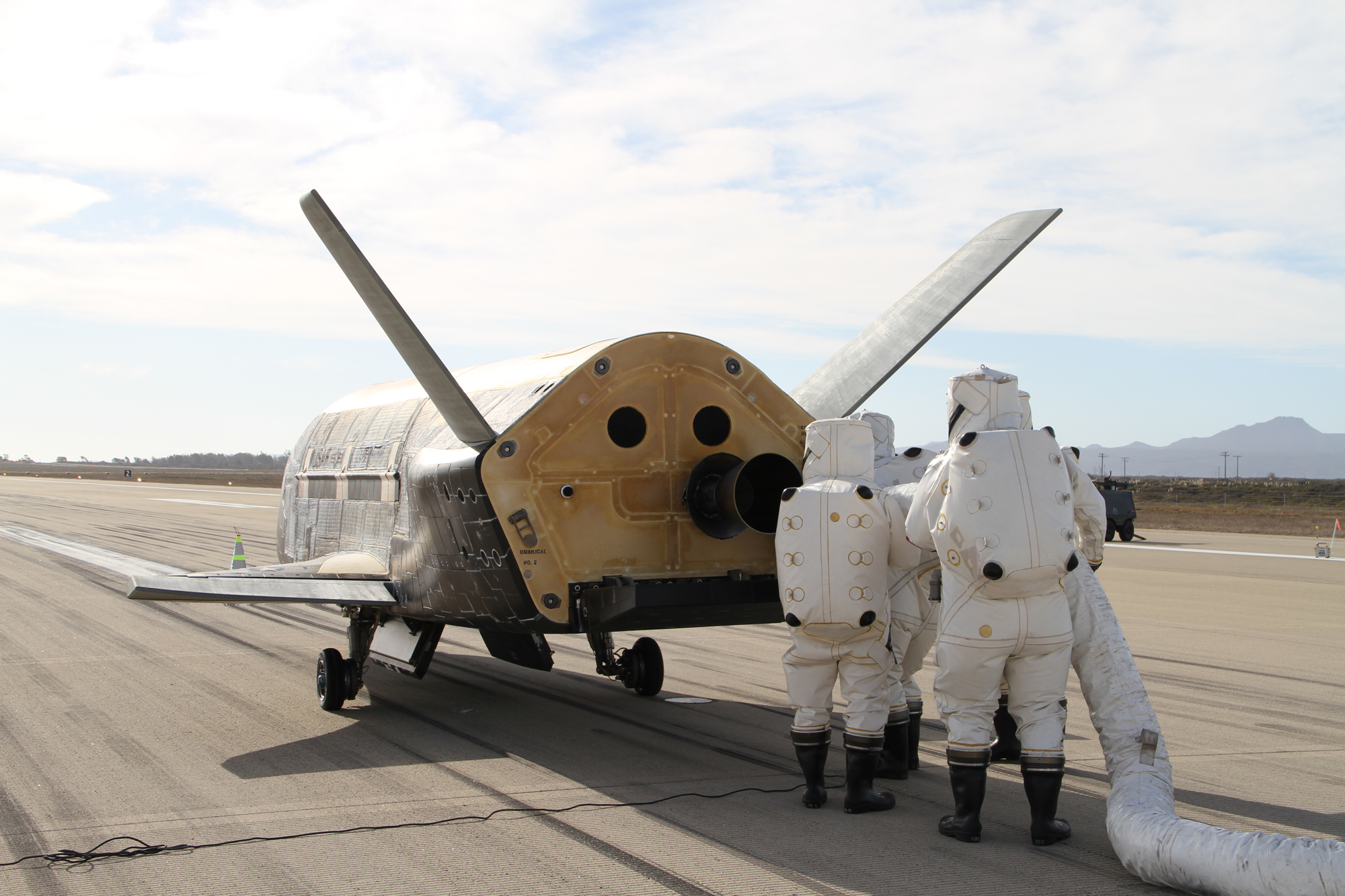
The United States Air Force's X-37B space plane will launch on its fourth mystery mission next month.
The unmanned X-37B space plane, which looks like a miniature version of NASA's now-retired space shuttle orbiter, is scheduled to blast off atop a United Launch Alliance Atlas V rocket from Florida's Cape Canaveral Air Force Station on May 20.
"We are excited about our fourth X-37B mission," Randy Walden, director of the Air Force Rapid Capabilities Office, said in a statement. "With the demonstrated success of the first three missions, we’re able to shift our focus from initial checkouts of the vehicle to testing of experimental payloads." [See photos of the X-37B's third mission]
The X-37B's payloads and specific activities are classified, so it's unclear exactly what the spacecraft does while zipping around the Earth. But Air Force officials have revealed a few clues about the upcoming mission.
"The Air Force Research Laboratory (AFRL), Space and Missile Systems Center (SMC) and the Air Force Rapid Capabilities Office (AFRCO) are investigating an experimental propulsion system on the X-37B on Mission 4," Capt. Chris Hoyler, an Air Force spokesman, told Space.com via email.
"AFRCO will also host a number of advance materials onboard the X-37B for the National Aeronautics and Space Administration (NASA) to study the durability of various materials in the space environment," Hoyler added.
The Air Force owns two X-37B space planes, both of which were built by Boeing's Phantom Works division. The solar-powered spacecraft are about 29 feet long by 9.5 feet tall (8.8 by 2.9 meters), with a wingspan of 15 feet (4.6 m) and a payload bay the size of a pickup-truck bed. The X-37B launches vertically atop a rocket and lands horizontally on a runway, like the space shuttle did.
Get the Space.com Newsletter
Breaking space news, the latest updates on rocket launches, skywatching events and more!
One of the two X-37B vehicles flew the program's first and third missions, which were known as OTV-1 and OTV-3, respectively. ("OTV" is short for "Orbital Test Vehicle.") The other spacecraft flew OTV-2. Air Force officials have not revealed which space plane will be going to orbit on the upcoming mission.
OTV-1 launched in April 2010 and landed in December of that year, staying in orbit for 225 days. OTV-2 blasted off in March 2011 and circled Earth for 469 days, coming down in June 2012. OTV-3 launched in December 2012 and stayed aloft for a record-breaking 675 days, finally landing in October 2014.

If Air Force officials know how long OTV-4 is going to last, they're not saying.
"The X-37B is designed for an on-orbit duration of 270 days," Hoyler said. "Longer missions have been demonstrated. As with previous missions, the actual duration will depend on test objectives, on-orbit vehicle performance and conditions at the landing facility."
The secrecy surrounding the X-37B and its payloads has fueled speculation in some quarters that the vehicle could be a space weapon of some sort. But Air Force officials have repeatedly refuted that notion.
"The primary objectives of the X-37B are twofold: reusable spacecraft technologies for America's future in space, and operating experiments which can be returned to, and examined, on Earth," Air Force officials wrote in on online X-37B fact sheet. "Technologies being tested in the program include advanced guidance, navigation and control; thermal protection systems; avionics; high-temperature structures and seals; conformal reusable insulation, lightweight electromechanical flight systems; and autonomous orbital flight, re-entry and landing."
Follow Mike Wall on Twitter @michaeldwall and Google+. Follow us @Spacedotcom, Facebook or Google+. Originally published on Space.com.
Join our Space Forums to keep talking space on the latest missions, night sky and more! And if you have a news tip, correction or comment, let us know at: community@space.com.

Michael Wall is a Senior Space Writer with Space.com and joined the team in 2010. He primarily covers exoplanets, spaceflight and military space, but has been known to dabble in the space art beat. His book about the search for alien life, "Out There," was published on Nov. 13, 2018. Before becoming a science writer, Michael worked as a herpetologist and wildlife biologist. He has a Ph.D. in evolutionary biology from the University of Sydney, Australia, a bachelor's degree from the University of Arizona, and a graduate certificate in science writing from the University of California, Santa Cruz. To find out what his latest project is, you can follow Michael on Twitter.









